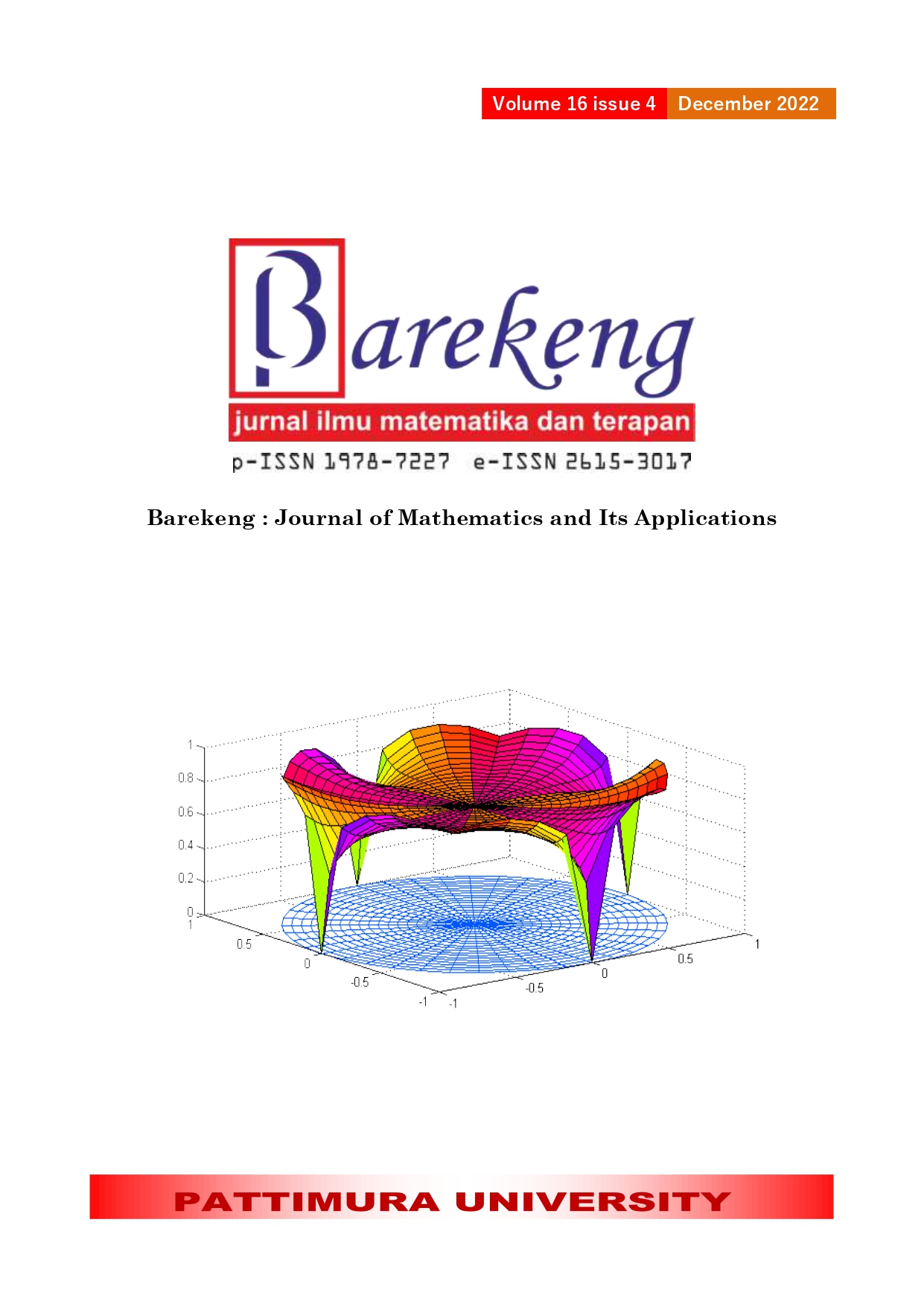CONSTRUCTING OUT-MIGRATION POTENCY INDEX FROM PROVINCE OF INDONESIA IN 2019
Abstract
Out-migration is a solution that people do when their area is unable to fulfill their needs. However, the area of origin that people left behind is even more neglected because many productive and educated people are moving. To know the potency of out-migration, it is necessary to determine the push factors of migration. Lee (1966) and Lewis (1982) state that there are push factors including economic, demographic, environmental, infrastructure, and political factors. This study aims to build a composite indicator that is able to describe the potency of out-migration from a province of Indonesia in 2019. By utilizing data from various BPS’s publications, exploratory factor analysis was carried out with the guide from OECD (2008). As result, four factors were formed, namely economic population and infrastructure factor, welfare and pollution factor, social and security factor, and industrial and clean water factor. DKI Jakarta has the lowest potency and Papua has the highest potency. The correlation between HDI and the Out-Migration Potential Index (OMPI) is -0.798 so that the higher human development in an area, the lower potency to be left by the population. This index is a new index, it can be an illustration that given to the government in dealing regional development’s gap in Indonesia.
Downloads
References
E. S. Lee, “A Theory of Migration,” IMISCOE Res. Ser., pp. 75–92, 1966.
Fatmawati, “Pengaruh Jumlah Penduduk Usia Produktif, Kemiskinan, Dan Inflasi Terhadap Pertumbuhan Ekonomi Di Kabupaten Bireuen,” Univ. Esa Unggul, vol. 01, no. April, pp. 15–22, 2018.
M. faizin F. Faizin, “Analisis Pengaruh PDRB Perkapita, IPM, Kemiskinan dan Pengangguran Terhadap Migrasi Tenaga Kerja ke Luar Negeri,” J. PROFIT Kaji. Pendidik. Ekon. dan Ilmu Ekon., vol. 7, no. 2, pp. 113–120, 2020.
B. Saktyo Kuncoro, “Faktor-Faktor yang Mempengaruhi Pengambilan Keputusan Menjadi Tenaga Kerja Indonesia (Studi Kasus di Kabupaten Grobogan),” Econ. Dev. Anal. J., vol. 6, no. 4, pp. 386–394, 2018.
W. I. Puspitasari and S. Kusreni, “Jurnal Ilmu Ekonomi Terapan FAKTOR-FAKTOR YANG MEMPENGARUHI MIGRASI TENAGA,” J. Ilmu Ekon. Terap., vol. 02, no. 1, pp. 49–64, 2017.
E. victara Tinambunan, “Dampak Pembangunan Infrastruktur dalam Mendorong Pertumbuhan untuk Mengurangi Tingkat Kemiskinan di Indonesia Tahun 2013 – 2017,” J. Ekon. Dan Kebijak. Pembang., vol. 8, no. 1, pp. 20–42, 2020.
W. Wijoyo, “Determinan Migrasi Internasional: Migrasi Netto Studi Kasus Asean+6 Dan Gravitasi Migrasi Keluar Dari Indonesia,” no. January 2011, p. 17, 2011.
M. Nardo, M. Saisana, A. Saltelli, S. Tarantola, A. Hoffman, and E. Giovannini, Handbook on constructing composite indicators, no. 03. 2008.
J. F. H. Jr, W. C. Black, B. J. Babin, R. E. Anderson, W. C. Black, and R. E. Anderson, Multivariate Data Analysis. 2018.
H. F. Kaiser and J. Rice, “Little Jiffy, Mark Iv,” Educ. Psychol. Meas., vol. 34, no. 1, pp. 111–117, 1974.
A. Bernard, F. Rowe, M. Bell, P. Ueffing, and E. Charles-Edwards, “Comparing internal migration across the countries of Latin America: A multidimensional approach,” PLoS One, vol. 12, no. 3, pp. 1–24, 2017.
L. Salvati and M. Carlucci, “A composite index of sustainable development at the local scale: Italy as a case study,” Ecol. Indic., vol. 43, pp. 162–171, 2014.
K. N. Santoso and H. Usman, “Indeks Komposit Pekerjaan Tidak Layak (Iptl) Di Indonesia,” J. Kependud. Indones., vol. 15, no. 1, p. 19, 2020.
J. Martilla and J. James, “Importance-Performance Analysis: An easily applied technique for measuring attribute importance and performance can further the development of effective marketing programs.,” Journal of Marketing, vol. 41, no. 1. pp. 77–79, 1977.
E. Tate, “Uncertainty Analysis for a Social Vulnerability Index,” Ann. Assoc. Am. Geogr., vol. 103, no. 3, pp. 526–543, 2013.
Copyright (c) 2022 Nadya Namirasepti Efendi, Timbang Sirait

This work is licensed under a Creative Commons Attribution-ShareAlike 4.0 International License.
Authors who publish with this Journal agree to the following terms:
- Author retain copyright and grant the journal right of first publication with the work simultaneously licensed under a creative commons attribution license that allow others to share the work within an acknowledgement of the work’s authorship and initial publication of this journal.
- Authors are able to enter into separate, additional contractual arrangement for the non-exclusive distribution of the journal’s published version of the work (e.g. acknowledgement of its initial publication in this journal).
- Authors are permitted and encouraged to post their work online (e.g. in institutional repositories or on their websites) prior to and during the submission process, as it can lead to productive exchanges, as well as earlier and greater citation of published works.






1.gif)



